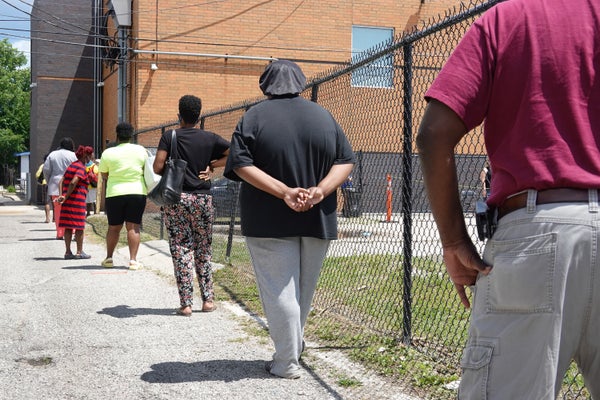New coronavirus infections have soared to their highest levels in five states, as some leaders pause plans to reopen businesses further. The record highs—in Arizona, Florida, Georgia, Nevada, and South Carolina—mark a concerning rise in cases that is now stretching into its third consecutive week. More than 2.5 million people in the United States have been infected with coronavirus and at least 125,000 have died, greater than any other country.
Early in the pandemic, Sarah Cobey, an epidemiologist and evolutionary biologist at the University of Chicago, pivoted her own research on influenza to model the dynamics of COVID-19. Here she answers some questions from Scientific American contributor Marla Broadfoot about why we are seeing an uptick in cases—and whether they herald a dreaded second wave of the disease.
[An edited transcript of the interview follows.]
On supporting science journalism
If you're enjoying this article, consider supporting our award-winning journalism by subscribing. By purchasing a subscription you are helping to ensure the future of impactful stories about the discoveries and ideas shaping our world today.
This month more than 20 states have reported a rise in daily coronavirus cases. Is this uptick part of a first or second wave? Or are those categories even a useful way of looking at this pandemic?
I think this is a hard question, because I am not sure that it is that useful to think about the dynamics that we are seeing as waves. We know that influenza and many other respiratory pathogens cause these wavelike epidemics, where the crests and troughs of the waves are set by the fraction of the population that is susceptible. Epidemics start declining when the susceptible population falls below the threshold for herd immunity. And they can take off again once the susceptible fraction rises above it. But what we are looking at here is a virus that obviously has not been circulating in a population for a long time—and to which most of us are still susceptible. There is no reason that we should be seeing the kind of wavelike epidemic dynamics that we have seen for other respiratory pathogens. Instead what we are seeing is a massive epidemic that could burn through the population rapidly unless we do something to slow transmission, which is what we are currently doing with interventions such as social distancing and masks. It is possible that, over time, COVID-19 could start developing cyclical, flulike waves. But that is years away.
If we were to use the wave terminology that is in common parlance, what sorts of dynamics with the disease should we expect to see next?
We could see all different kinds of resurgences or waves. And it really depends on what we do. We could have just one big wave like Japan, which seems to be managing the virus extremely well, if we adhered to similar interventions until a vaccine is developed. We could see something like a second wave if people just gave up entirely, for instance, on social distancing or wearing masks. But I do not think that is consistent with our behavior.
Some experts and politicians have suggested the new coronavirus might die down in the summer. Yet new cases are still on the rise. Do these recent trends tell us anything about the seasonal nature of the pathogen?
Most respiratory viruses that have been studied seem to have higher rates of transmission in the winter and lower rates in the summer. And we know that this seasonality is not completely driven by human behavior. It looks like there are these other forces that are influencing this seasonal timing, such as temperature, humidity and sunlight. I think it would be strange if the new coronavirus were not similarly sensitive to the seasons. If you just looked at the basic math here, however, changes in human behavior are going to have a far greater impact on transmission. As you pointed out, we are seeing transmission picking up in many states. But I suspect things would be even worse if it were not for summer.
What lessons could be gleaned from past flu epidemics to understand what we are seeing right now with the COVID-19 pandemic?
One thing we have already talked about is seasonal effects. For instance, the H1N1 flu pandemic of 2009 had a spring wave that died out over the summer and then came back rather early in the fall. The summer weather could similarly affect the transmission of COVID-19. But what we have here is a virus that is extremely transmissible. That makes it hard to draw a direct comparison to any other epidemic we have had before. All previous flu pandemics have been in populations with preexisting immunity, so even though it was a new virus, people already had a lot of immunity built up from exposure to previous flu viruses.
Another thing we are seeing is variation in the size and timing of COVID-19 epidemics—among not just states but countries—that can be traced to different interventions that had been in place in those regions. That is something that we also saw with the 1918 flu pandemic. We are seeing again that the timing of these waves is probably under our control. It will depend on how much we are going to pull back on our own interventions.
Read more about the coronavirus outbreak from Scientific American here. And read coverage from our international network of magazines here.
